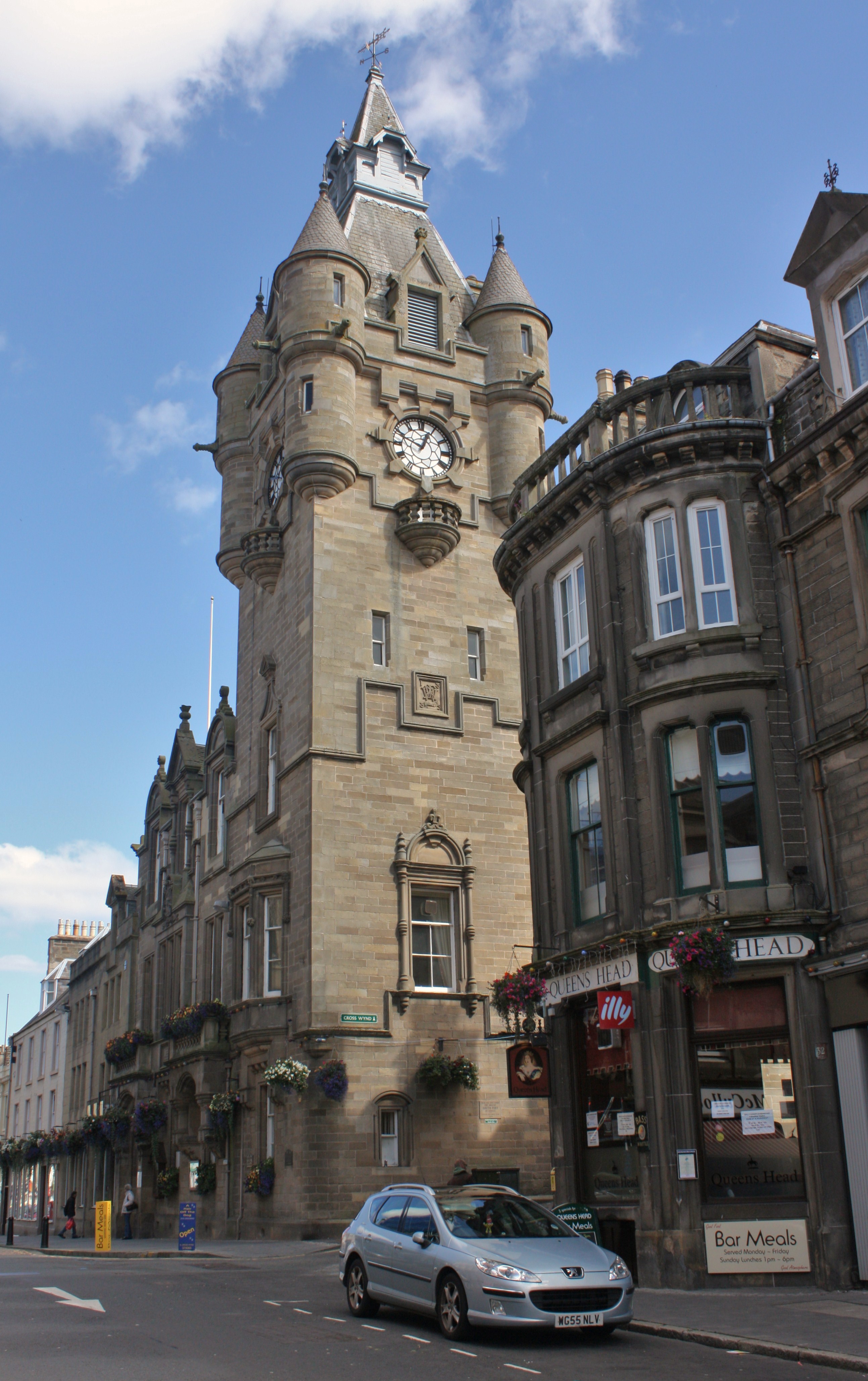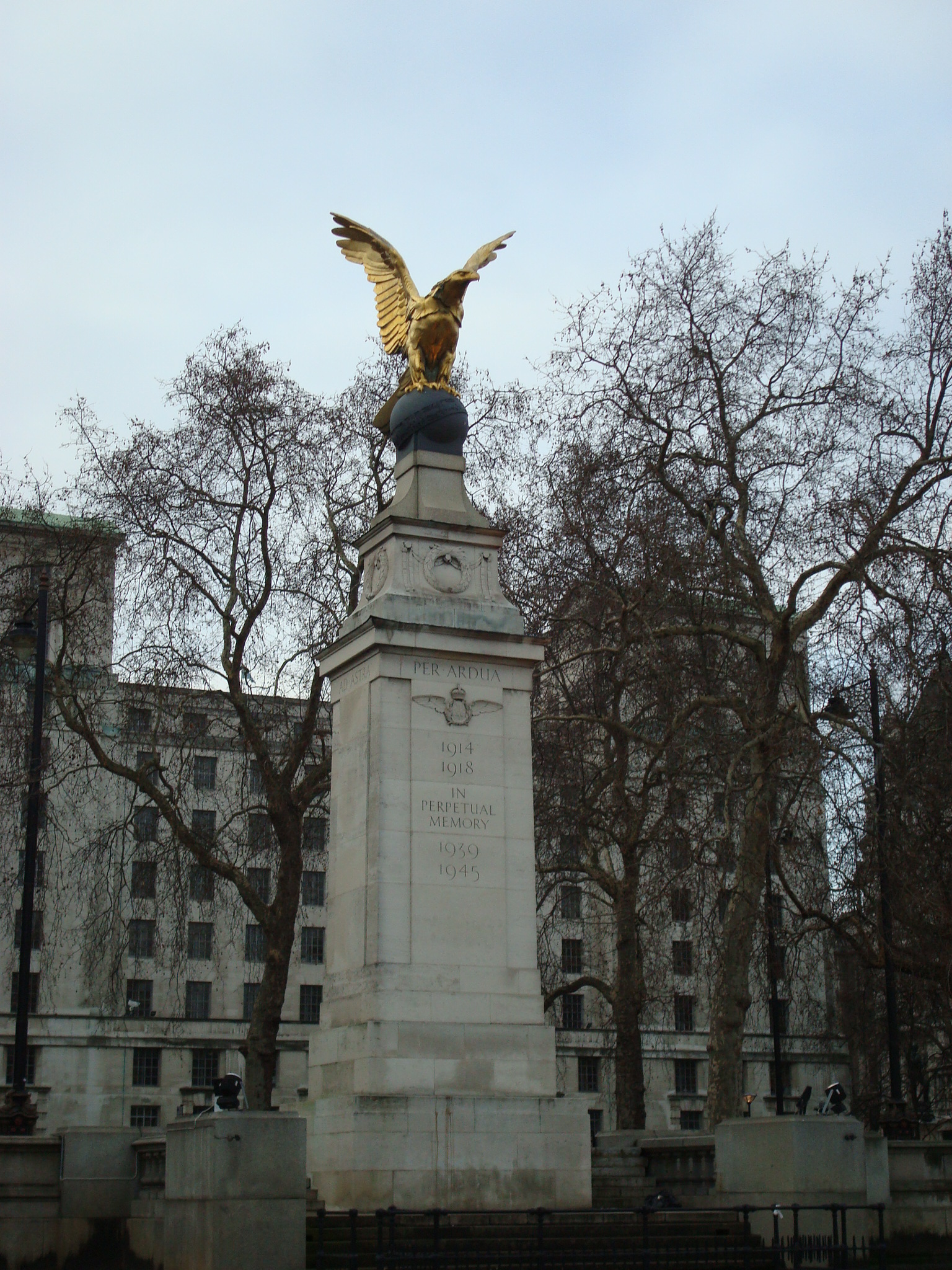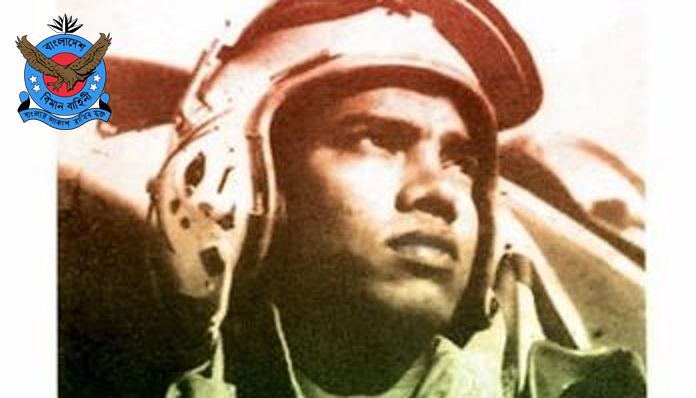|
Thomas Kennedy (RAF Officer)
Air Chief Marshal Sir Thomas Lawrie "Jock" Kennedy, (19 May 1928 – 18 November 2013) was a senior Royal Air Force officer. He served as Deputy Commander of RAF Strike Command from 1979 to 1981, and Air Member for Personnel from 1983 to 1986. Following his retirement from the military, he served as Lord Lieutenant of Rutland. Early life Kennedy was born on 19 May 1928 in Hawick, Roxburghshire, Scotland. He was educated at Hawick High School. He was a member of the Boy Scouts. Military career In April 1946, Kennedy joined the Royal Air Force as an airman as part of his National Service. He served for six months before being selected for officer training. Having attended Royal Air Force College Cranwell, he was commissioned on 8 April 1949 as a pilot officer. He was awarded the Philip Sassoon Memorial Trophy for best all-round cadet at Cranwell. He was promoted to flying officer on 9 April 1950 with seniority from 8 April 1949, and to flight lieutenant on 8 October 1951. In ... [...More Info...] [...Related Items...] OR: [Wikipedia] [Google] [Baidu] |
Hawick
Hawick ( ; sco, Haaick; gd, Hamhaig) is a town in the Scottish Borders council area and historic county of Roxburghshire in the east Southern Uplands of Scotland. It is south-west of Jedburgh and south-south-east of Selkirk. It is one of the farthest towns from the sea in Scotland, in the heart of Teviotdale, and is the biggest town in the former county of Roxburghshire. The town is at the confluence of the Slitrig Water with the River Teviot. The town was formally established in the 16th century, but was previously the site of historic settlement going back hundreds of years. By the late 17th century, the town began to grow significantly, especially during the Industrial Revolution and Victorian era as a centre for the production of textiles, with a focus on knitting and weaving, involving materials such as tweed and cashmere. By the late 20th century, textile production had declined but the town remains an important regional centre for shopping, tourism and services. H ... [...More Info...] [...Related Items...] OR: [Wikipedia] [Google] [Baidu] |
Aircraftman
Aircraftman (AC) or aircraftwoman (ACW) is the lowest rank in the British Royal Air Force (RAF) and the air forces of several other Commonwealth countries. In RAF slang, aircraftmen are sometimes called "erks". Aircraftman ranks below leading aircraftman and has a NATO rank code of OR-1. It is now a training rank only and no airmen in productive service hold this rank. Aircraftmen do not wear any rank insignia. The rank was renamed air recruit (AR) in the Royal Air Force in July 2022. History The rank was introduced to the RAF in January 1919, replacing the ranks of "air mechanic", "private" and "clerk" that had been introduced under Air Memorandum No. 1 in March 1918. There were three grades: leading aircraftman (LAC), aircraftman 1st class (AC1) and aircraftman 2nd class. A similar grading existed for junior ratings in the Royal Navy. The rank of senior aircraftman (SAC) was introduced on 1 January 1951. The lowest grade was an AC2; also colloquially known as an "AC plonk". ... [...More Info...] [...Related Items...] OR: [Wikipedia] [Google] [Baidu] |
RAF Benevolent Fund
The Royal Air Force Benevolent Fund (RAF Benevolent Fund or RAFBF) is the Royal Air Force's leading welfare charity, providing financial, practical and emotional support to serving and former members of the RAF – regardless of rank – as well as their partners and dependents. They help members of the RAF family deal with a wide range of issues: from childcare and relationship difficulties to injury and disability, and from financial hardship and debt to illness and bereavement. Any member of the RAF family can approach the fund for help, which includes serving and former members of the RAF, their partners and dependents. History Lord Trenchard founded the Royal Air Force Benevolent Fund in 1919, one year after the formation of the Royal Air Force. In their first year, welfare expenditure was £919. The first welfare assistance they gave was a shilling for a night's lodging to give the recipient a chance to seek work. Other early assistance included money to provide a benef ... [...More Info...] [...Related Items...] OR: [Wikipedia] [Google] [Baidu] |
Dowty Group
Dowty Group was a leading British manufacturer of aircraft equipment. It was listed on the London Stock Exchange and was once a constituent of the FTSE 100 Index. The firm ceased operating as an individual entity following its acquisition by TI Group in 1992. The company has its origins as the ''Aircraft Components Company'' in 1931 and the work of British inventor and businessman George Dowty. In 1934, Dowty achieved its breakthrough sale of its innovative undercarriage designs, being contracted by the Gloster Aircraft Company to provide oleo struts for the Gloster Gauntlet biplane. In 1935, as the business expanded to meet demand, Dowty founded a new manufacturing venture to produce his aviation products, which was named ''Dowty Aviation''. It would quickly secure numerous additional orders and manufacturing facilities to cope with the pressing demands of the Second World War, a significant majority of British aircraft production incorporating the firm's various products. ... [...More Info...] [...Related Items...] OR: [Wikipedia] [Google] [Baidu] |
RAF Second Tactical Air Force
The RAF Second Tactical Air Force (2TAF) was one of three tactical air forces within the Royal Air Force (RAF) during and after the Second World War. It was made up of squadrons and personnel from the RAF, other British Commonwealth air forces, and exiles from German-occupied Europe. Renamed as British Air Forces of Occupation in 1945, 2TAF was recreated in 1951 and became Royal Air Force Germany in 1959. Formation 2TAF was formed on 1 June 1943 as HQ Tactical Air Force from Army Co-operation Command, in connection with preparations then in train to invade Europe a year later. It took units from both Fighter Command and Bomber Command in order to form a force capable of supporting the Army in the field. Bomber Command provided No. 2 Group with light bombers; Fighter Command was split into the Air Defence of Great Britain, retaining fighter units for home defence, and No. 83 Group and No. 84 Group operating aircraft, and No. 85 Group controlling ground-based units, for the S ... [...More Info...] [...Related Items...] OR: [Wikipedia] [Google] [Baidu] |
RAF Pitreavie Castle
Royal Air Force Pitreavie Castle or RAF Pitreavie Castle was a station of the Royal Air Force located at Pitreavie Castle in Dunfermline and near Rosyth, Fife, Scotland. Built in the early 17th century, the castle was sold to the Air Ministry in 1938. An underground bunker was constructed and the station was used to coordinate the operations of RAF Coastal Command and the Royal Navy during the Second World War. The station was subsequently used as a UK and NATO maritime headquarters before closing in 1996. It is now in residential use. History Pre-military use Pitreavie Castle is thought to have been built by Sir Henry Wardlaw, the 1st Baronet of Pitreavie, who bought the Pitreavie estate in 1608, with the castle believed to have existed by 1614. It was sold to Archibald Primrose, 1st Earl of Rosebery, in 1703, and then to Sir Robert Blackwood, Lord Dean of Guild, and later Lord Provost, of Edinburgh, in 1711. It remained in the Blackwood family for 170 years, but was u ... [...More Info...] [...Related Items...] OR: [Wikipedia] [Google] [Baidu] |
RAF Staff College, Bracknell
The RAF Staff College at Bracknell was a Royal Air Force staff college active for most of the second half of the 20th century. Its role was the training of staff officers in the administrative, staff and policy aspects of air force matters. Its motto was ''Visu et Nisu'' which is Latin for ''by vision and effort''. The equivalent in the British Army was the Staff College, Camberley and the equivalent in the Royal Navy was the Royal Naval Staff College, Greenwich. History Ramslade House was built as suburban-style villa in 1840 and then substantially re-modelled by Lieutenant Colonel Frederick Mackenzie in 1895. The house became the headquarters for Second Tactical Air Force in 1943 during the Second World War. The Staff College at Bracknell was formed by transferring a major portion of the Staff College at Bulstrode Park to Ramslade House in July 1945. Air Vice-Marshal Ronald Graham, the then Commandant at Bulstrode Park, became the first commandant at Bracknell. On 1 Ma ... [...More Info...] [...Related Items...] OR: [Wikipedia] [Google] [Baidu] |
1953 Coronation Honours
The 1953 Coronation Honours were appointments by Queen Elizabeth II to various orders and honours on the occasion of her coronation on 2 June 1953. The honours were published in ''The London Gazette'' on 1 June 1953.New Zealand list: The recipients of honours are displayed here as they were styled before their new honour. They are arranged by honour, with classes (Knight, Knight Grand Cross, ''etc.'') and then divisions (Military, Civil, ''etc.'') as appropriate. United Kingdom and the Commonwealth Peerages Viscounts * The Rt. Hon. Frederick Marquis, Baron Woolton Chancellor of the Duchy of Lancaster since 1952; Minister of Food, 1940–1943; Minister of Reconstruction and member of War Cabinet, 1943–1945; Lord President of the Council, 1945 and 1951–1952; ''by the name, title and style of Viscount Woolton, of Liverpool in the County Palatine of Lancaster.'' Barons * Sir Peter Bennett Unionist Member of Parliament for Edgbaston since 1940. Parliamentary Secre ... [...More Info...] [...Related Items...] OR: [Wikipedia] [Google] [Baidu] |
Flight Lieutenant
Flight lieutenant is a junior commissioned rank in air forces that use the Royal Air Force (RAF) system of ranks, especially in Commonwealth countries. It has a NATO rank code of OF-2. Flight lieutenant is abbreviated as Flt Lt in the Indian Air Force (IAF) and RAF, and as FLTLT in the Pakistan Air Force (PAF), Royal Australian Air Force (RAAF) and Royal New Zealand Air Force (RNZAF) and has sometimes also been abbreviated as F/L in many services; it has never been correctly abbreviated as "lieutenant". A flight lieutenant ranks above flying officer and below a squadron leader and is sometimes used as an English language translation of a similar rank in non-English-speaking countries. The rank originated in the Royal Naval Air Service (RNAS) in 1914. It fell into abeyance when the RNAS merged with the Royal Flying Corps during the First World War but was revived in 1919 in the post-war RAF. An RAF flight lieutenant is the equivalent of a lieutenant in th ... [...More Info...] [...Related Items...] OR: [Wikipedia] [Google] [Baidu] |
Pilot Officer
Pilot officer (Plt Off officially in the RAF; in the RAAF and RNZAF; formerly P/O in all services, and still often used in the RAF) is the lowest commissioned rank in the Royal Air Force and the air forces of many other Commonwealth countries. It ranks immediately below flying officer. It has a NATO ranking code of OF-1 and is equivalent to a second lieutenant in the British Army or the Royal Marines. The Royal Navy has no exact equivalent rank, and a pilot officer is senior to a Royal Navy midshipman and junior to a Royal Navy sub-lieutenant. In the Australian Armed Forces, the rank of pilot officer is equivalent to acting sub lieutenant in the Royal Australian Navy. The equivalent rank in the Women's Auxiliary Air Force (WAAF) was "assistant section officer". Origins In the Royal Flying Corps, officers were designated pilot officers at the end of pilot training. As they retained their commissions in their customary ranks (usually second lieutenant or lieutenant), and ... [...More Info...] [...Related Items...] OR: [Wikipedia] [Google] [Baidu] |




